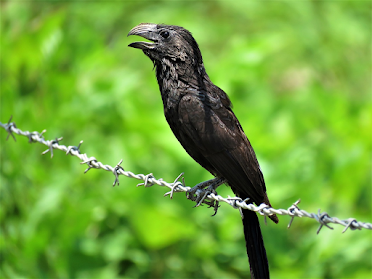Introduction
Biryani isn't just a dish; it's an emotion. For many, it’s the ultimate comfort food, a symphony of flavors and aromas that can transport you to another world. But where did this iconic dish come from, and how did it evolve into the beloved meal we know today? Join us on a flavorful journey through the ages as we explore the rich history of biryani.
The Origin of Biryani
Ancient Beginnings
The roots of biryani trace back to the Indian subcontinent, but its exact origins are shrouded in mystery. Some believe it originated in Persia and was brought to India by the Mughals. Others argue that it has always been an integral part of Indian cuisine. Regardless of its beginnings, biryani's story is as rich and layered as the dish itself.
Influence of Persian Cuisine
Persian influence on Indian cuisine is undeniable, and biryani is no exception. The Persian method of cooking rice with meat, known as "pulao," laid the groundwork for what would become biryani. The key difference? The intricate layers of marinated meat and fragrant rice that define biryani.
Biryani in the Mughal Era
The Royal Kitchens
Biryani truly flourished during the Mughal era. The royal kitchens were a melting pot of culinary innovation, blending Persian, Turkish, and Indian flavors. The Mughals elevated biryani to an art form, creating a dish that was fit for emperors.
Spread Across the Indian Subcontinent
As the Mughal Empire expanded, so did the reach of biryani. Each region it touched added its own twist, giving rise to the diverse varieties we see today. From the fragrant Lucknowi biryani to the fiery Hyderabadi biryani, the dish became a canvas for regional flavors and ingredients.
Regional Variations of Biryani
Hyderabadi Biryani
Ingredients and Preparation
Hyderabadi biryani, known for its bold flavors, is made with basmati rice, marinated meat (often chicken or goat), and a blend of spices including saffron, cardamom, and cloves. The meat is cooked with yogurt and fried onions, creating a rich and flavorful base.
Unique Features
What sets Hyderabadi biryani apart is its cooking method, known as "dum." The ingredients are layered and slow-cooked in a sealed pot, allowing the flavors to meld beautifully.
Kolkata Biryani
Ingredients and Preparation
Inspired by the Awadhi style, Kolkata biryani is lighter on spices and includes boiled potatoes and eggs. The rice is cooked with a delicate blend of spices, and the dish is often flavored with rose water and kewra essence.
Unique Features
The inclusion of potatoes and the subtle sweetness from the rose water give Kolkata biryani its unique character. It's a milder yet equally delightful variant of the dish.
Lucknowi Biryani
Ingredients and Preparation
Also known as Awadhi biryani, this version uses the "pukki" method where the rice and meat are cooked separately and then layered together. The spices used are more subtle, focusing on aromatic flavors like saffron and cardamom.
Unique Features
The use of the "pukki" method and the aromatic flavor profile make Lucknowi biryani a sophisticated and elegant dish.
Other Notable Varieties
Other notable biryanis include the Malabar biryani from Kerala, which uses short-grain rice and has a distinct coconut flavor, and the Sindhi biryani from Pakistan, which is known for its spicy and tangy taste. Each variety tells a unique story of the region it comes from.
Biryani and Cultural Significance
Festivals and Celebrations
Biryani is more than just a meal; it's a staple at celebrations and festivals across the Indian subcontinent. Whether it's a wedding, a religious festival, or a family gathering, biryani often takes center stage, bringing people together through its irresistible allure.
Biryani in Popular Culture
Biryani has also made its mark in popular culture. From Bollywood movies to literary works, it has been celebrated as a symbol of love, comfort, and tradition. It's a dish that transcends boundaries and unites people from all walks of life.
Modern-Day Biryani
Biryani in Restaurants
Today, biryani is a global phenomenon. You can find it in restaurants all over the world, each with its own twist on the classic recipe. From high-end eateries to street food stalls, biryani continues to win hearts and palates everywhere.
Biryani at Home
Making biryani at home has also become increasingly popular. With the availability of ready-made spice mixes and detailed recipes online, more people are trying their hand at recreating this iconic dish in their own kitchens.
Conclusion
The journey of biryani from its ancient origins to its modern-day avatars is a testament to its timeless appeal. It’s a dish that has evolved and adapted, yet its essence remains unchanged. Whether you prefer it spicy or mild, with chicken or goat, biryani is a culinary masterpiece that will continue to be cherished for generations to come.
FAQs
Q: What is the difference between biryani and pulao?
A: While both dishes involve cooking rice with meat, biryani is more elaborate with distinct layers and marinated meat. Pulao, on the other hand, is simpler and typically cooked together.
Q: Can biryani be made vegetarian?
A: Absolutely! Vegetarian biryani substitutes meat with vegetables like potatoes, carrots, and peas, and can be just as flavorful.
Q: Which kind of rice is best for biryani?
A: Basmati rice is the preferred choice for biryani due to its long grains and aromatic quality.
Q: How is dum biryani different from other types?
A: Dum biryani is cooked with a method called "dum," where the pot is sealed and the ingredients are slow-cooked over a low flame, allowing the flavors to meld together.
Q: Which biryani is the spiciest?
A: Hyderabadi biryani is known for its bold and spicy flavors, making it one of the spiciest varieties.







.jpg)



.jpg)






.jpg)



.jpg)


0 Comments